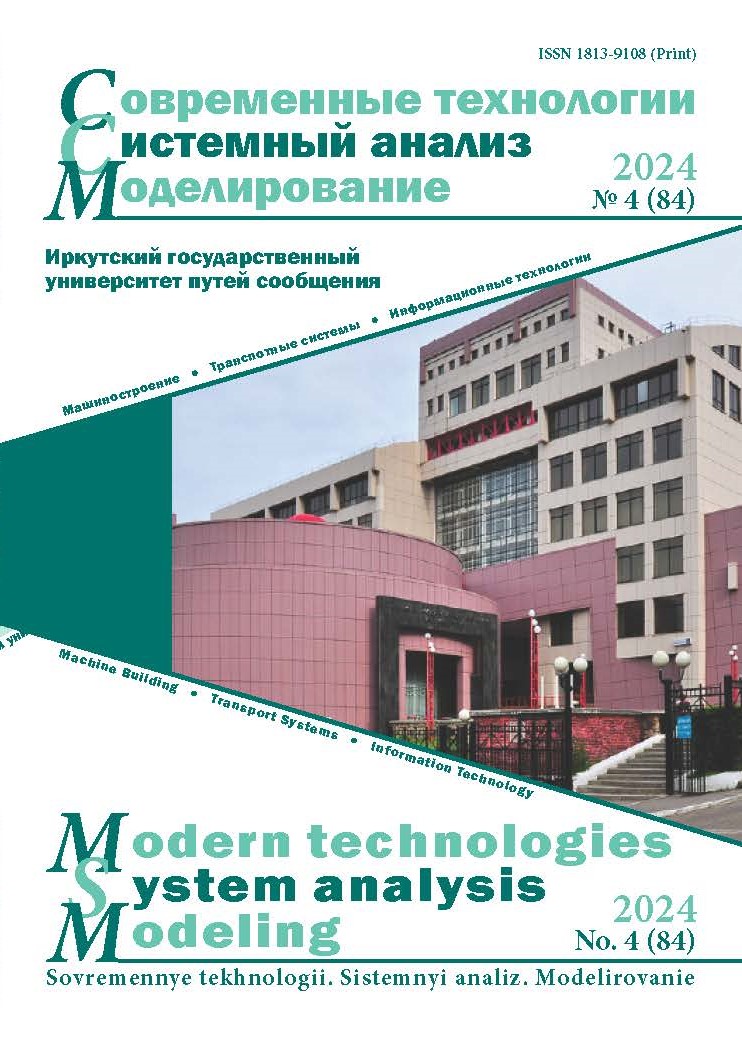Prospects for the use of a digital railway track model within the framework of planning and organization of works
Keywords:
digital model, infrastructure, railway transport, aerial photography, risk control, databaseAbstract
A digital model is a tool that displays a virtual set of information about real objects or their complex. The application of this model covers a wide range of tasks, including the transport industry, in particular rail transport. This article contains developed recommendations based on data obtained by means of aerial photography using unmanned vehicles and specialized software systems. These data allow to create a concept for the implementation of a digital model in the structural divisions of JSC «Russian Railways». In particular, the methods and sources of updating the database have been identified, as well as changes that update the state of infrastructure facilities have been taken into account. The main advantages of using a digital model are the possibilities of visual and intuitive presentation of information, which greatly facilitates the choice of a rational solution by a specialist. Such a model allows not only to visualize the current conditions of objects, but also to develop and test various scenarios of operational intervention or prevention. This helps to optimize the work process, minimize the likelihood of problems and increase the overall efficiency of production activities. Consideration of specific examples of the use of digital models in the railway industry shows that they can significantly improve the quality and efficiency of decision-making. An analysis of the data obtained from the digital model was carried out on a specific section of the route. The evaluation showed the high efficiency of this tool. As a result of the research, data were presented that are of practical importance and can be used for further development of digital models in various fields of railway transport. In addition, the digital model opens up new horizons for improving the infrastructure management process. The output data allows us to judge the suitability for further processing and forecasting changes. Monitoring systems based on digital models can become an important tool for maintaining a high level of safety on the railway, as well as for improving the efficiency of logistics and management processes. In conclusion, it is emphasized that innovative approaches, including the use of digital models and unmanned aerial vehicles, play a key role in the digitalization of the railway industry. Modern technologies make it possible not only to increase safety and efficiency, but also to create conditions for sustainable infrastructure development. Research and development in this area continues to prove its importance and prospects, opening up new opportunities for improving transport systems.
References
Шевченко Д.В. Методология построения цифровых двойников на железнодорожном транспорте // Вестн. Науч.-исслед. ин-та ж.-д. трансп. 2021. Т. 80. № 2. С. 91–99.
Тарабрин В.Ф., Юрченко Е.В., Лохач А.В. ЕК АСУИ СДМИ – цифровая платформа для предиктивного анализа и управления состоянием железнодорожной инфраструктуры // Путь и путевое хозяйство. 2022. № 6. С. 25–28.
Быков А.А., Челядинова К.В. Использование цифрового проекта пути и электронных карт при строительстве и ремонте железнодорожного пути // Интерэкспо Гео-Сибирь. 2019. Т. 1. № 1. С. 92–98.
Суслов О.А., Федорова В.И. Цифровые двойники – перспективная основа планирования технического обслуживания железнодорожного пути // Наука 1520 ВНИИЖТ: загляни за горизонт : сб. материалов I Междунар. науч.-практ. конф. Щербинка, 2021. С. 184–192.
Об утверждении правил по охране труда при техническом обслуживании и ремонте объектов инфраструктуры путевого комплекса ОАО «РЖД» : распоряжение ОАО «РЖД» № 953/р от 08.04.2022 (ред. 14.03.2023). Доступ из справ.-правовой систе-мы АСПИЖТ в локал. сети.
Типовой технологический процесс № 81400065. Обследование земляного полотна и водоотводных сооружений с применением беспилотных летательных аппаратов : утв. заместителем начальника Дирекции диагностики и мониторинга инфраструкту-ры № ЦДМ-41/п от 19.09.2022.
Revealing safety risks of unmanned aerial vehicles in construction / M. Namian, M.Khalid, G. Wang et al. // Transportation re-search record. 2021. Vol. 2675. Iss. 11. P. 334–347. DOI 10.1177/03611981211017134.
Тимофеев Е.Н., Севостьянов А.А., Сокольников А.В. Создание цифровой модели железнодорожного пути с использованием беспилотных летательных аппаратов // Вестн. Сибир. гос. ун-та путей сообщ. 2024. № 1 (68). С. 73–82.
Давтян А.М., Дружинина Т.Я., Асалханова Т.Н. Диагностика и мониторинг железнодорожной инфраструктуры с помощью беспилотных летательных аппаратов // Актуальные проблемы развития авиационной техники и методов ее эксплуатации – 2023 : материалы XVI Всерос. науч.-практ. конф. студентов и аспирантов, посвящ. празднованию 100-летия отечеств. граждан. авиации. Иркутск, 2023. С. 249–254.
Романенко В.В., Рудковский И.В., Ародь Л.Н. Применение современных средств автоматизации для паспортизации кривых на Белорусской железной дороге // Вестн. Белорус. гос. ун-та трансп.: наука и транспорт. 2021. № 2 (43). С. 43–46.
Карпов И.Г., Лагерев С.Ю. Содержание рельсовой колеи по координатам // Путь и путевое хозяйство. 2022. № 3. С. 7–9.
Карпов И.Г., Лагерев С.Ю., Асалханова Т.Н. Перспективы развития референтцных сетей на железнодорожном транспорте // Вестник транспорта Поволжья. 2021. № 5 (89). С. 26–30.
Каташева А.П., Асалханова Т.Н., Осколков А.А. Сравнительный анализ планирования и фактического выполнения работ по текущему содержанию пути по Иркутск-Сортировочной дистанции пути // Молодая наука Сибири. 2020. № 2 (8). С. 73–80. URL: https://mnv.irgups.ru/sites/default/files/articles_pdf_files/katasheva_asalhanova.pdf (дата обращения 18.09.2024).
Давтян А.М., Асалханова Т.Н. Использование беспилотных авиационных систем на железнодорожном транспорте // Молодая наука Сибири. 2023. № 1 (19). С. 24–32. URL:https://ojs.irgups.ru/index.php/mns/article/view/1035/767 (дата обращения 20.09.2024).
Гончаровская В.П., Гулякин Д.В. Виртуальное строительство (цифровая модель здания) // Тенденции развития науки и образования. 2023. № 98-11. С. 101–104.
Асалханова Т.Н., Полищук С.С. Обследование скально-обвальных участков Восточно-Сибирской железной дороги с помощью беспилотных летальных аппаратов // Вестник транспорта Поволжья. 2023. № 3 (99). С. 46–51.
Тимофеев Е.Н., Ефимов Н.В., Бакулина В.Е. Применение цифровой модели железной дороги на примере службы пути // Науч.-техн. и эконом. сотрудничество стран АТР в XXI веке. 2023. Т. 1. С. 431–434.
Automated Identification and Qualitative Characterization of Safety Concerns Reported in UAV Software Platforms / A. Di Sorbo, F. Zampetti, C.A. Visaggio et al. // ACM Transactions on Software Engineering and Methodology. 2023. Vol. 32. Iss. 3. DOI 10.1145/3564821.


